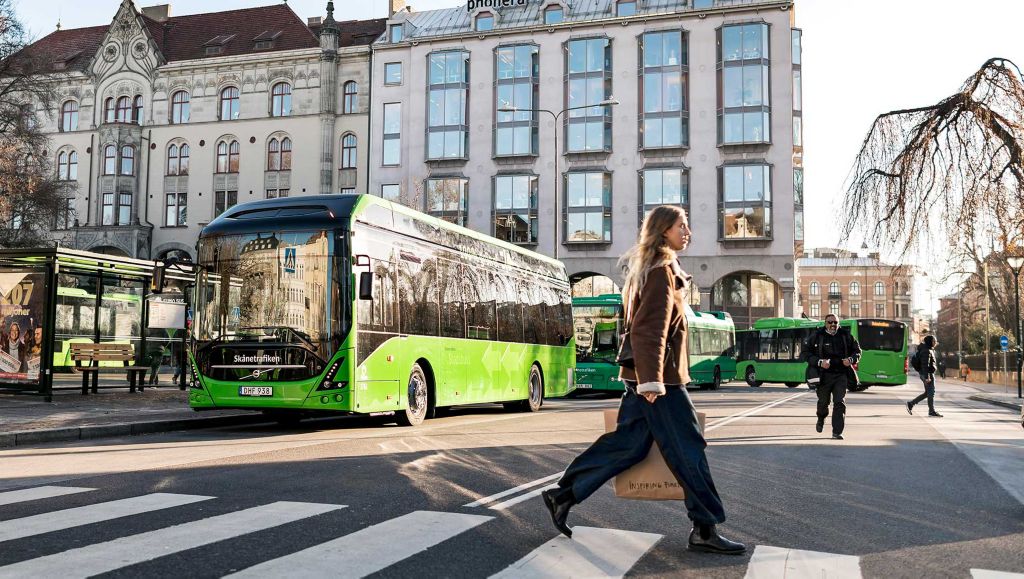How electric buses can address noise pollution


After air pollution, traffic noise is the biggest environmental problem in Europe’s cities. According to the World Health Organization (WHO), loud, disruptive noise is a growing health problem which has underestimated effects. A study carried out by the WHO showed that 30 per cent of people in Europe are disturbed by traffic noise. Janos Turcsany,Manager Volvo Noise and Vibration Laboratory is well aware of the problem.
“It sounds rather dramatic, but you could say that noise kills people,” he says. “A total of 152 million people are exposed to excessively high levels of noise every year. For one in five of them, the noise is so loud that it wakes them up at night. This leads to an increased risk of disturbed sleep and, as a secondary effect, cardiovascular disease.”
The WHO’s recommendation is that the average noise levels produced by road traffic should be below 53 dBA Lden (see explanation in fact box). For night noise exposure, WHO recommends reducing noise levels produced by road traffic during night time below 45 dB Lnight, as night-time road traffic noise above this level is associated with adverse effects on sleep.
When the Volvo Group commissioned to public research company Kantar Sifo to carry out a study in Sweden’s second largest city Gothenburg, the figures were similar. Seven out of ten residents of the city said that they were disturbed by high noise levels. The majority were troubled by traffic noise and more than half said that they had suffered physical or mental problems as a result of high noise levels.
According to Janos, it is disruptive noise at night that people are particularly concerned about.
The noise benefits that electric buses bring allow for greater freedom when choosing the site of bus stops. Currently, planners are often forced to locate bus stops some distance away from houses. Everyone knows how much disturbance the noise of a traditional bus engine idling can cause. Electric buses are much quieter both when they arrive at bus stops and while they are stationary.
“Urban planners and traffic engineers often want to put bus stops as close to passengers and their homes as possible. Quiet electric buses give them a greater flexibility. The type of noise that electric buses produce is insulated more effectively by building facades, which provide better insulation from that sort of sound. Overall, the sound insulating effect is quite significant, particularly when compared with conventional vehicles.”
“Many municipalities want to build more homes in their cities to increase population density and create a more sustainable society. Traffic noise is often an obstacle to this. Urban planners and traffic engineers often want to put bus stops as close to passengers and their homes as possible. Quiet electric buses give them a greater flexibility. It should be possible to build homes where this was previously impossible because of traffic noise,” says Janos.
There are however concerns that electric vehicles are too quiet, causing problems for pedestrians and cyclists, and especially the blind and visual impaired. So, there is a safety need to bring back sound to vehicles who don´t fulfill the minimum noise requirement. Starting 1 July 2019 all new type approvals of electric vehicles and hybrids in the EU, which do not fulfill the minimum noise requirement, must include Acoustic Vehicle Alerting System (AVAS), an artificial implemented sound system.
” Safety and environmental care are two of Volvo’s core values. When it comes to AVAS we are making use of our vast experience within both areas. Our focus is to create a sound that warns pedestrians, but which is not seen as disruptive either by the driver or people in the surrounding buildings. We believe that this will contribute to a safe and pleasant environment for people in our cities, and improved quality of life for all,” says Janos.
In 2015, a new bus route with Volvo electric buses was launched in Gothenburg with great success and the electric bus operations are expanding in both Gothenburg and other cities.
“Electric vehicles are wonderful in many ways. The two greatest environmental health risks in the EU today are air pollution and noise. This is one way of attempting to resolve both problems,” says Janos.
| FACTS |
How to measure harmful noise Noise is measured in decibels (dB). It is also referred to in A-weighted decibels (dB(A)). The A-weighting filter is a method of summing sound energy across the frequency spectrum of sounds audible to humans and is used to estimate the human ear’s response to sound. There are two important indicators of noise: Lden: The day, evening and night noise indicator. A measure of all the averaged (continuous equivalent) sound pressure level over a year, and Lnight: The night time noise indicator, which averages (continuous equivalent) sound pressure level over one year, focussing on the hours between 23:00 and 07:00. This corresponds to 8 hours, the recommended period of sleep for adults. A natural environment (birds, trees and wind) is associated with a typical average Lden value of 40 dB and an Lnight of 30 dB. A Lnight value of 40 dB is the limit suggested by the World Health Organization to avoid negative health effects on humans. EU Member States are required to report noise above a Lden of 55 dB and Lnight of 50 dB, under the Environmental Noise Directive. 3 dB is the minimum sound level typically considered perceptible by humans and starting from 5–10 dB humans can clearly acknowledge a different acoustic environment. Source: European Environmental Agency |